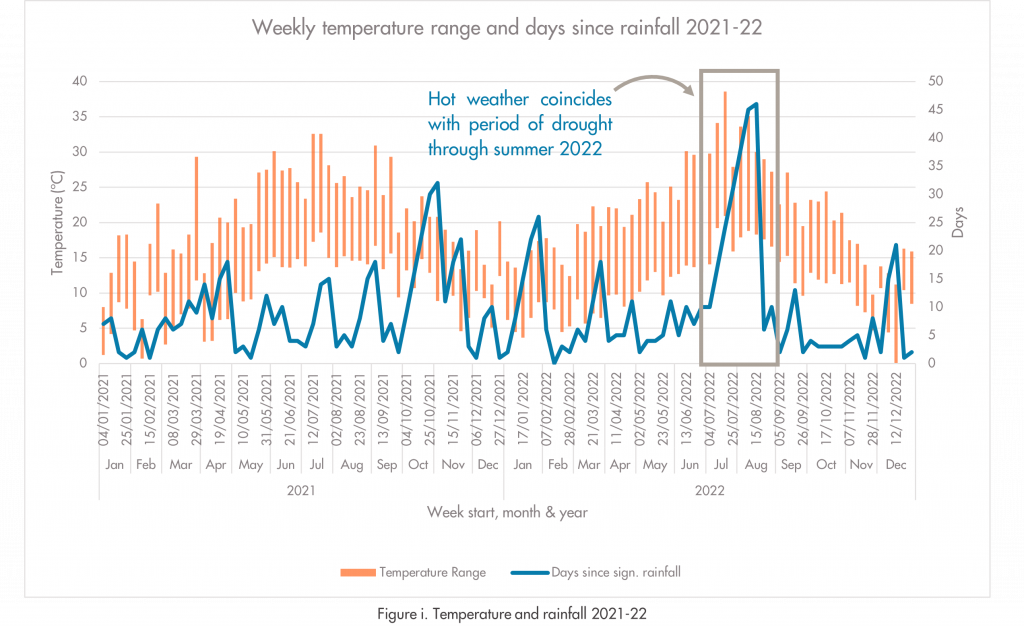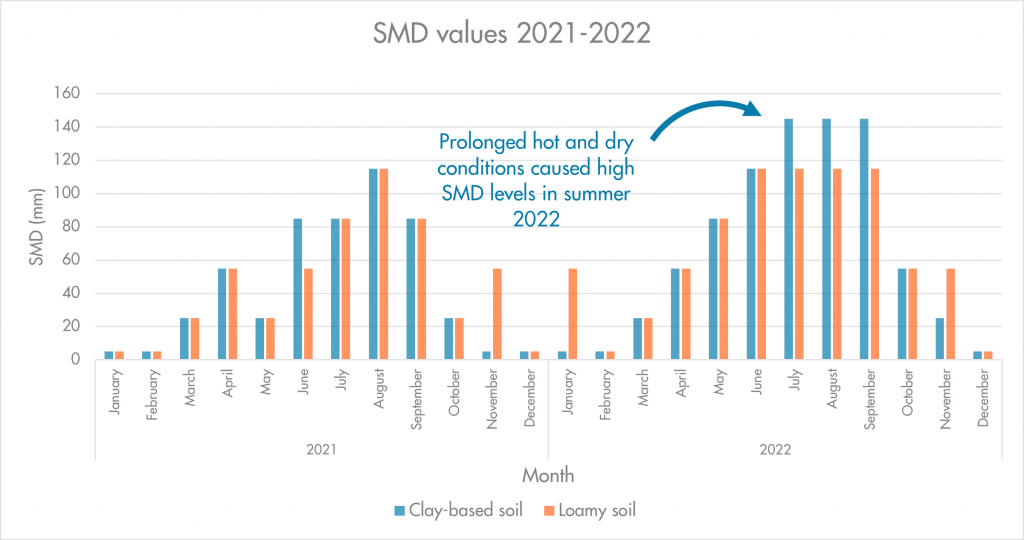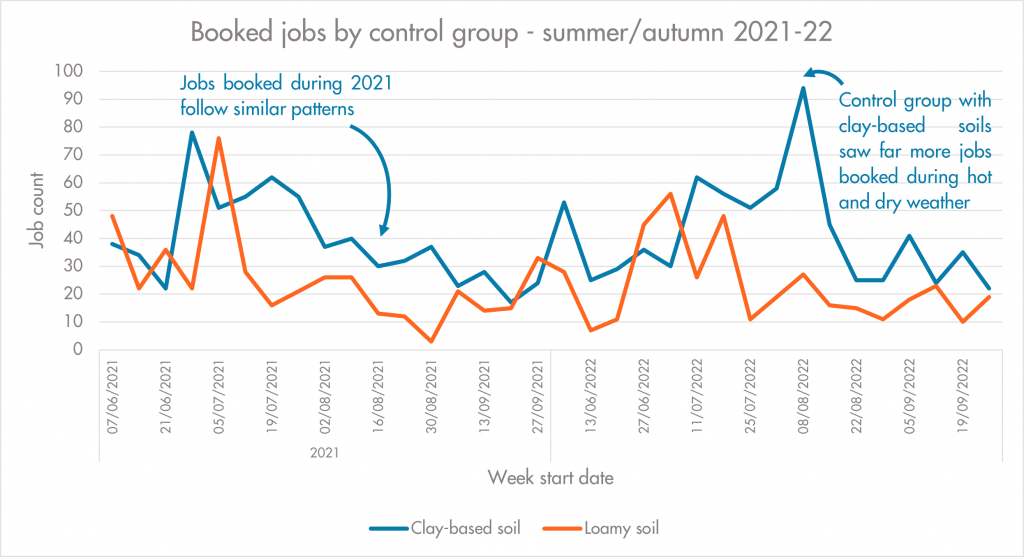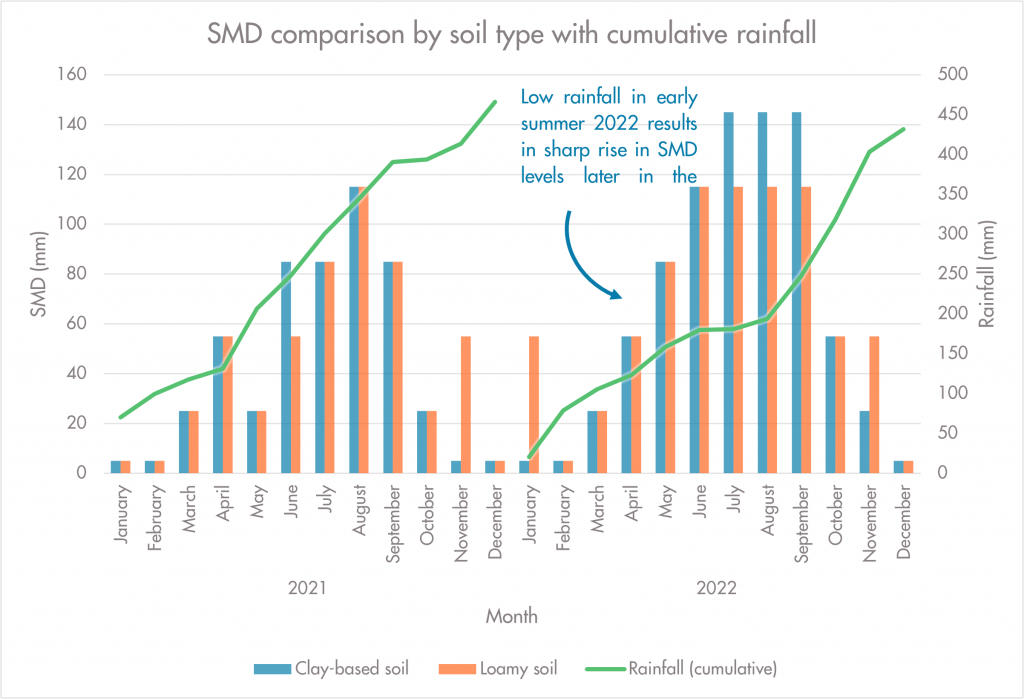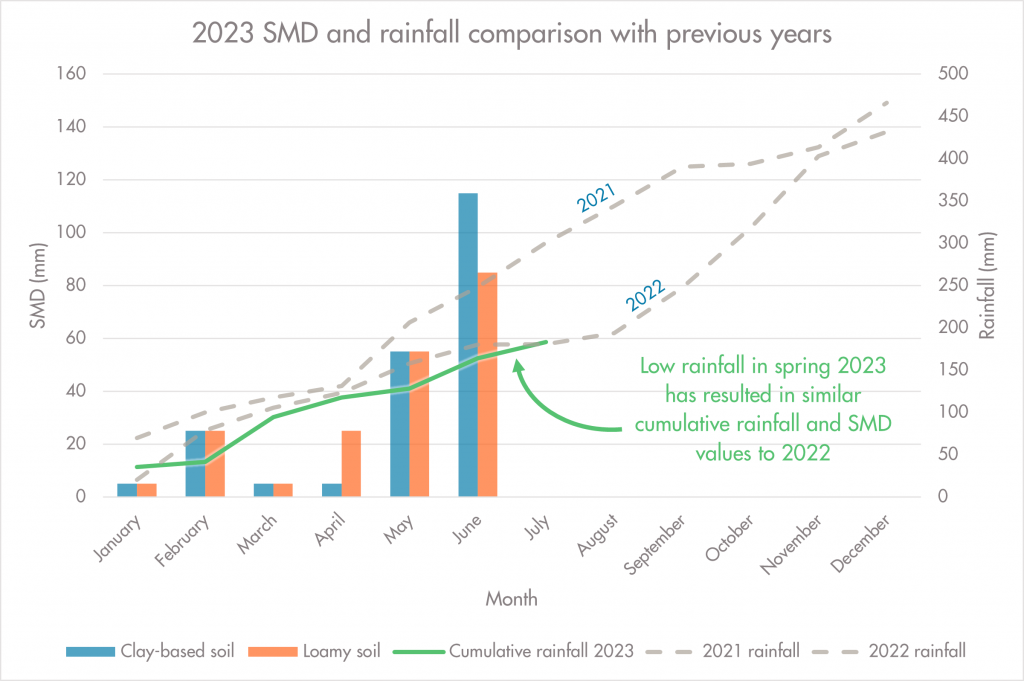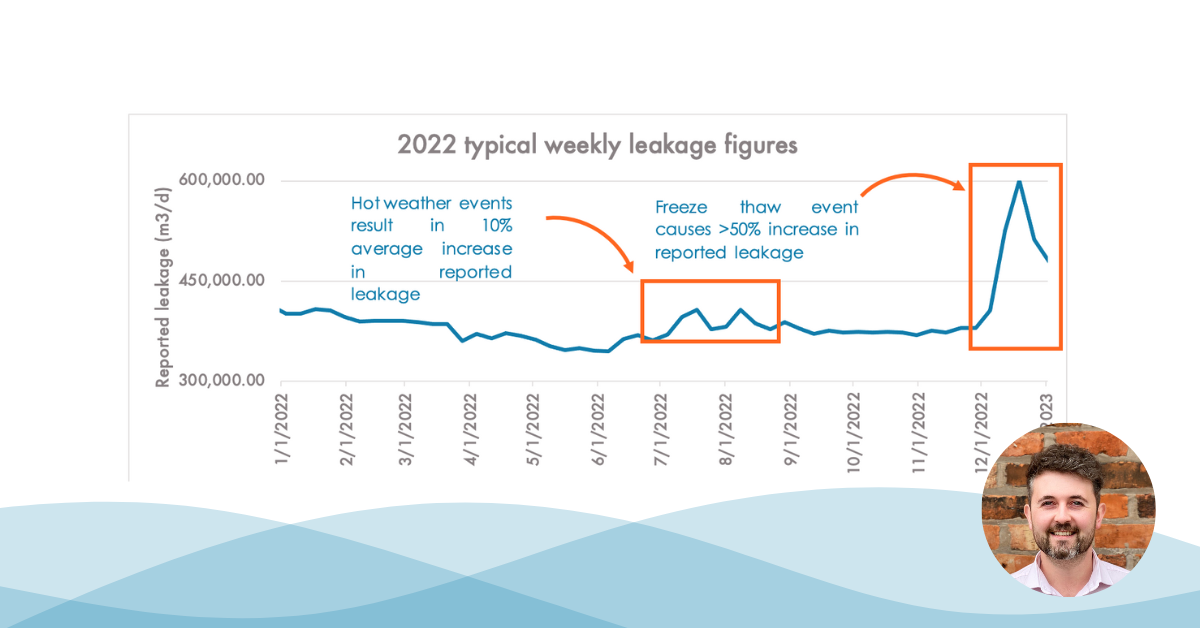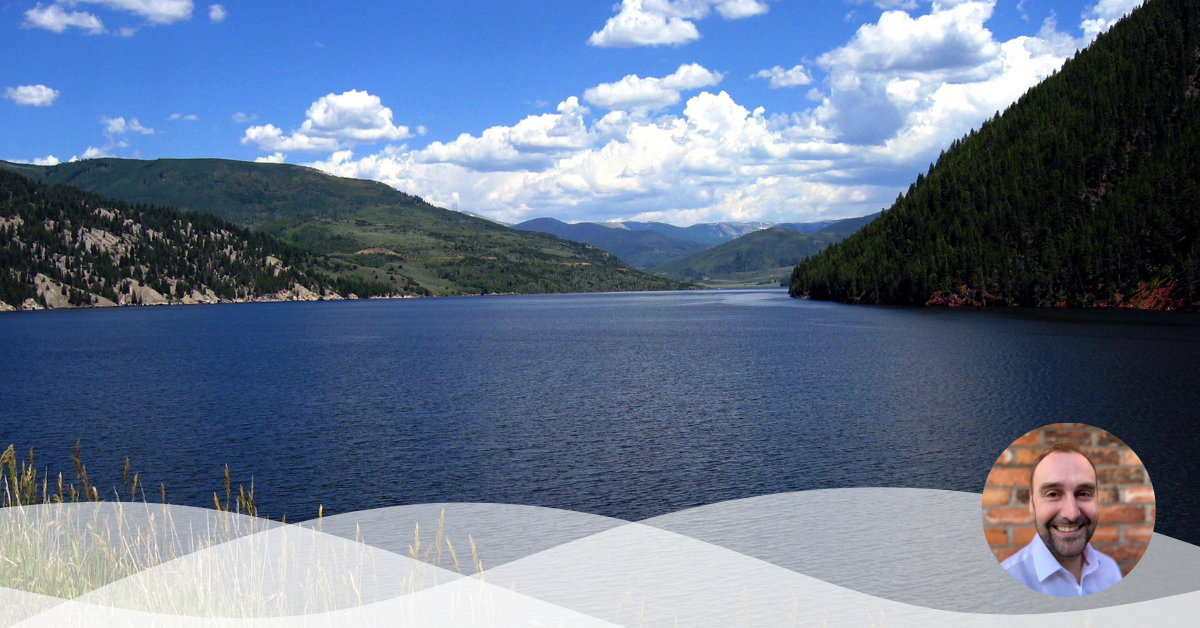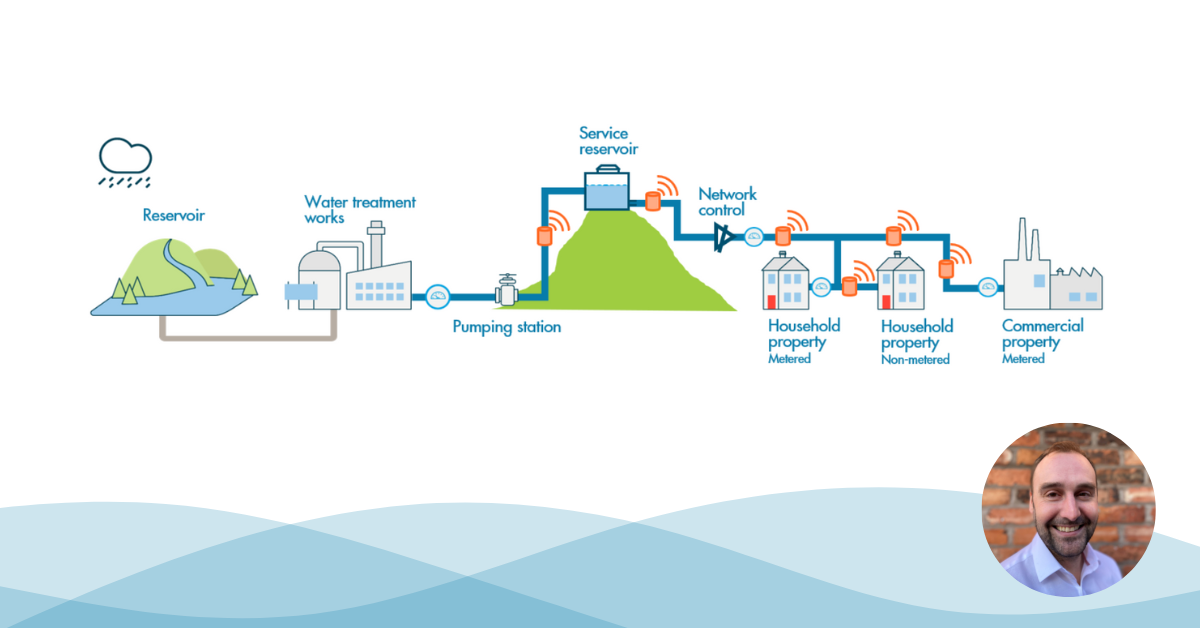Introduction
It may seem like all I do in these blogs is bang on about the weather, but yet again 2023 has added fuel to the fire by breaking another climate-based record. June 2023 has been confirmed as the ‘hottest’ on record by the Met Office, providing plenty of conjecture over whether the summer conditions we have experienced recently are becoming the ‘new normal’.
As I mentioned in my last blog, my focus for our annual internal assignment was to investigate whether the hot and dry weather in 2022 had a great enough bearing on soil moisture deficit (SMD) across our clients’ areas, to increase the number of burst related jobs raised on the network. In this blog I will share some of the findings from this investigation as well as compare recent years’ data with what has happened so far in 2023.
Soil Moisture Deficit and burst rates 2021-22
My assignment analysis focussed primarily on two separate DMA groups within our clients’ areas. These areas were made up of DMAs in regions of the country that were similar demographically, but that had different underlying soil types. One had a high percentage of clay particulate and an impermeable rock base that caused impeded drainage. This soil type was expected to be wet in the winter months but be more susceptible to drying and cracking in drought conditions. The other had a relatively well mixed particulate that had created a loamier soil that was slowly permeable and could become seasonally wet during winter and spring. It was expected that this soil type would fair better through drought conditions as the slow permeability would allow the soil to hold onto moisture more successfully than a clay-based soil.
My aim was to compare these areas and respective soils throughout 2021 and 2022 to see whether:
- A: an increase in burst related jobs during the hot, dry summer of 2022 was present in both areas
- B: an increase in SMD values correlated with an increase in job numbers
- C: different underlying soil types could accentuate the numbers of bursts occurring on the network
To investigate these factors, I analysed local weather station data, client job logs and MORECS data for 2021-22 as published by the Environment Agency. From a climate perspective it was clear that 2022 was a far more extreme year, with the summer months being hit by record heat coupled with an extended dry spell running from June to August (fig.i).
Figure i. Temperature and rainfall 2021-22
When comparing this weather pattern to the SMD values for my chosen control groups, as expected there was a clear relationship between temperature and rainfall, and levels of SMD. However the behaviour of the two different underlying soil types varied in relation to the climatic conditions; the clayey soils with impeded drainage remained far wetter during the winter months, but during the summer of 2022 seemed to feel the strain and had far greater SMD levels than the previous year (fig.ii). In contrast the slowly permeable and higher loam content soils had consistently lower SMD levels through summer 2022, possibly as the soil characteristics allow for moisture to be held for a longer period of time. These soils then took longer to recover heading into the winter of 2022 (fig.ii).
Figure ii. Soil moisture deficit values 2021-22
These changes in SMD had a noticeable effect on the number of burst related jobs being booked in for the respective control groups (fig.iii). Through summer 2021 the overall trend of jobs being booked was similar between both control groups. Looking at the 2022 data, the control group with underlying clay based and impeded drainage soils saw a sharp increase in jobs throughout the period where there was no rainfall, and temperatures were at their highest. Conversely, the loamy soil was relatively unaffected, with the number of jobs being booked largely following the same pattern seen in 2021.
Figure iii. Burst related jobs summer/autumn 2021-22
From this initial investigation there are trends in the data suggesting a correlation between increased SMD levels in the underlying soil and an increase in bursts on the network, especially during extreme climatic conditions as experienced in 2022. It is likely that this is observed more in the clay-based soils due to their particulate characteristics; clays tend to be at more risk of deformation and can crack when dried out completely, which in these conditions is highly probable. This in turn would create extra stress on the pipes installed within the soils and result in damage to the network.
How does 2023 compare?
Despite June being the ‘hottest’ on record, 2023 has not yet felt as extreme as last summer. Temperatures have rarely threatened to reach those seen in 2022 and the storms in early July have given gardens a welcome dousing after last month’s dry spell. However, soils require a lot of rainfall to retain their moisture, especially during summer. They also take a long time to react to changes in climatic conditions, with deeper soil layers (horizons) being affected by what has occurred in previous months and sometimes years. When comparing SMD levels to cumulative rainfall through 2021-22 it is clear that the situation that caused issues in late summer of 2022 had been started by a lack of rainfall in May and June (fig.iv).
Figure iv. SMD with cumulative rainfall
If we overlay the cumulative rainfall for the previous two years onto 2023 data, surprisingly this year’s rainfall profile matches very closely that of 2022 (fig.v). In fact, until July rainfall values had actually been lower than in 2022, which may explain why SMD in the clayey soils have reached the same levels as seen last year despite there being no drought or heat wave conditions. Due to there being less rainfall through spring and into early summer, it is possible that a similar spike in bursts could occur if we have another period of hot dry weather later in the summer. As the soils do not have strong moisture reserves it would not take much to elevate SMD levels to those observed in 2022, and with them, an increase in soil deformation leading to burst leakage.
Figure v. 2023 climate data
Conclusion
Throughout my investigation it has become clear that there is a relationship between climatic conditions, soil types and the number of burst related jobs being booked by water companies. Whilst there may not be a clear positive correlation between drought conditions and the number of jobs, in clay-based soils the effect that climate has on soil moisture deficit has been a contributing factor to the increase in jobs booked throughout summer 2022. Although so far conditions in 2023 have not been as severe, it is worth emphasising again that the lag time on soil moisture recovery could still mean that an increase in bursts, particularly in less hardy soils, could occur later in the year.
If the conditions over the past two summers really are the ‘new normal’ for the UK, then it may be prudent for water companies to factor in underlying soil types and historic soil moisture deficit patterns into their incident planning and network maintenance processes. By better understanding the soils that pipes are installed in, there will be fewer surprises in the long run and less risk to customer supply during times of the year when they need it most.

